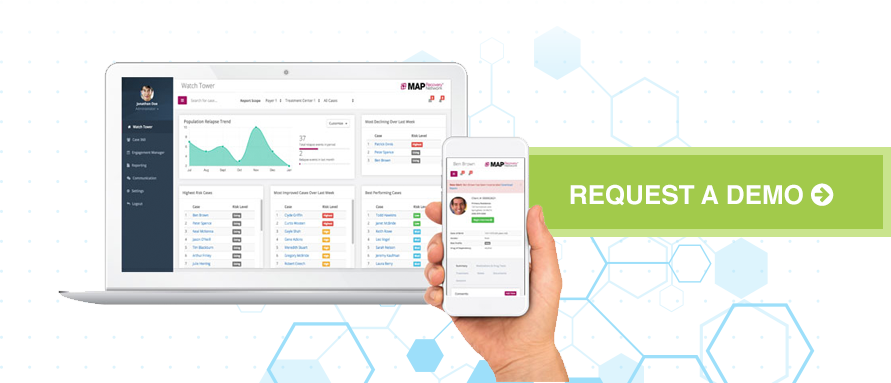MAP Data Insight:
Use Event Forecast by Substance
MAP’s mission is to leverage our extensive lived experience in behavioral health and substance misuse to improve personal connection, community health and healthcare outcomes.

Tracking and utilizing data to inform care is part of the MAP experience. By collecting and monitoring data, we gain insight by helping identify escalating risk factors that may be precursors of a use event. During times of implied risk, MAP is always proactive and prepared to offer additional support. The bar chart above illustrates the average amount of days until a use event for patients enrolled in MAP. This is calculating the number of days from their enrollment (post discharge from treatment) segmented by their self-reported primary drug of choice.
Practical Application
Knowing when a patient may be at higher risk for a use event by using data from previous patients with similar experiences is just one way to use data to inform care. For example, MAP ‘s data collection suggests a patient recovering from Heroin may be particularly vulnerable to relapse around 40-50 days post treatment. This factor coupled with additional factors helps identify escalated risk. Reaching out to offer advice and support during an implied time of struggle is critical. Having these metrics combined with data informed action is an important piece in how MAP helps patients improve their quality of life.
What is a Substance Use Event?
The using of substances outside of one’s respective recovery pathway. It could be a drug and/or alcohol. More commonly referred to as a “relapse” or “recurrence”.
